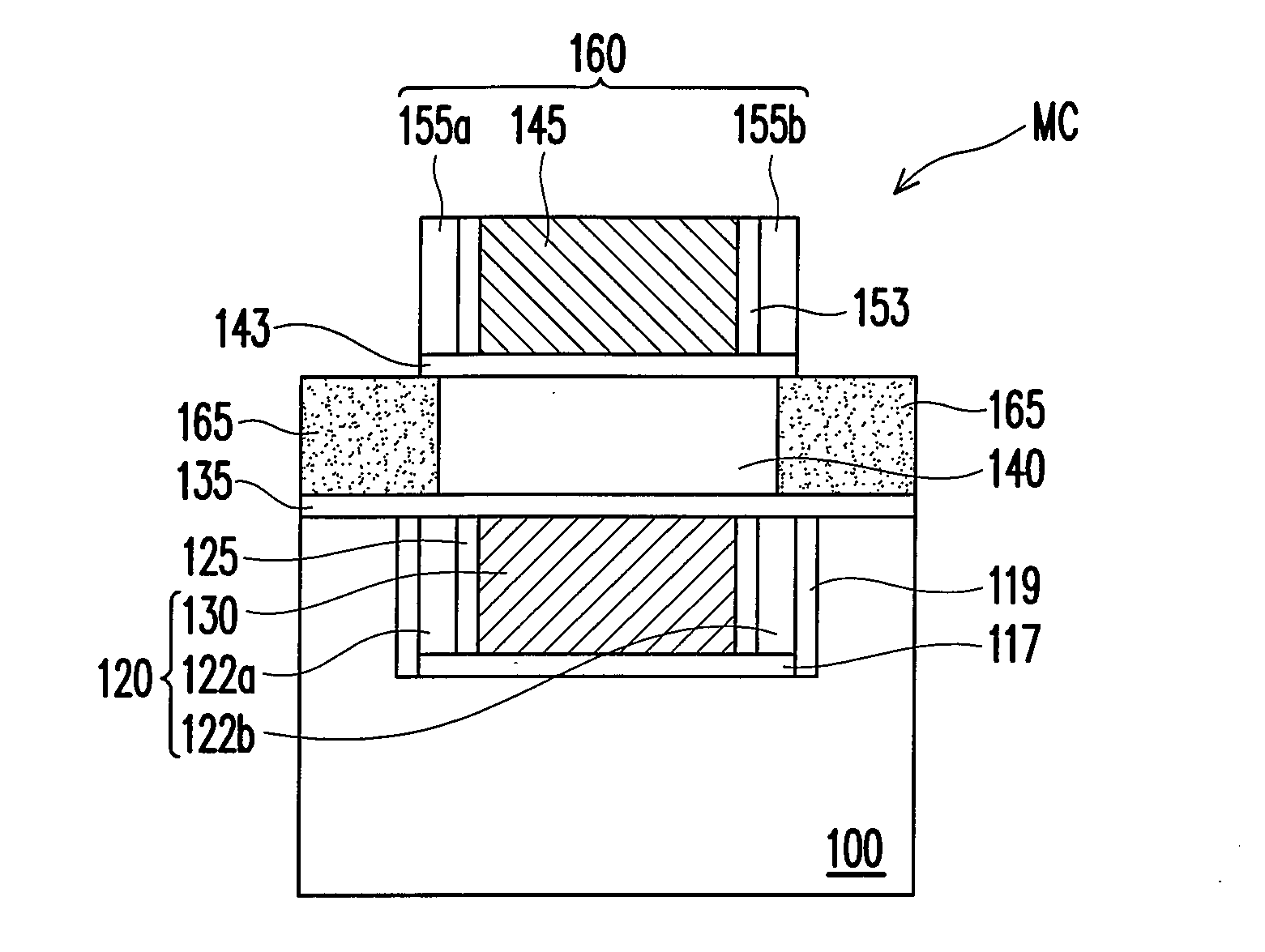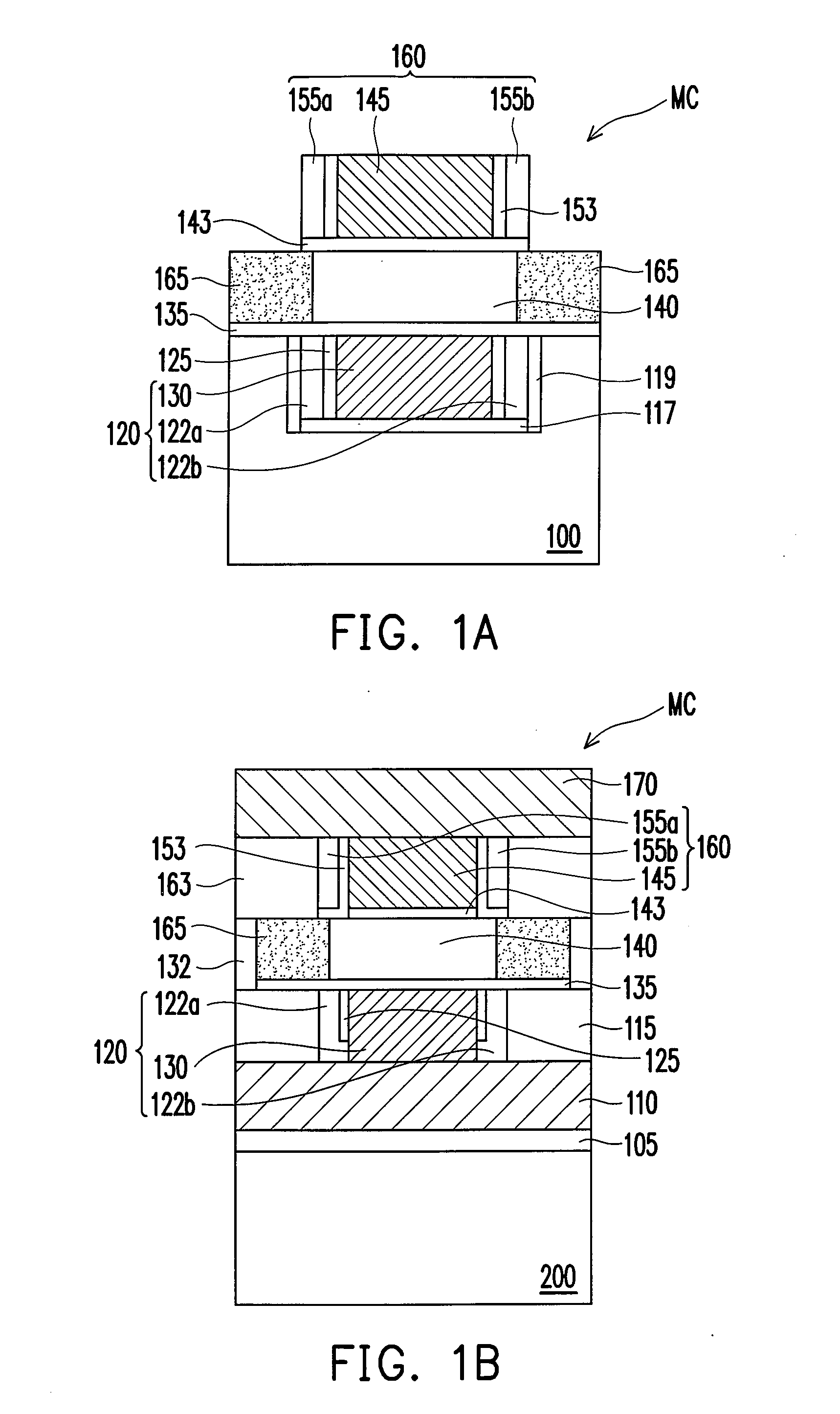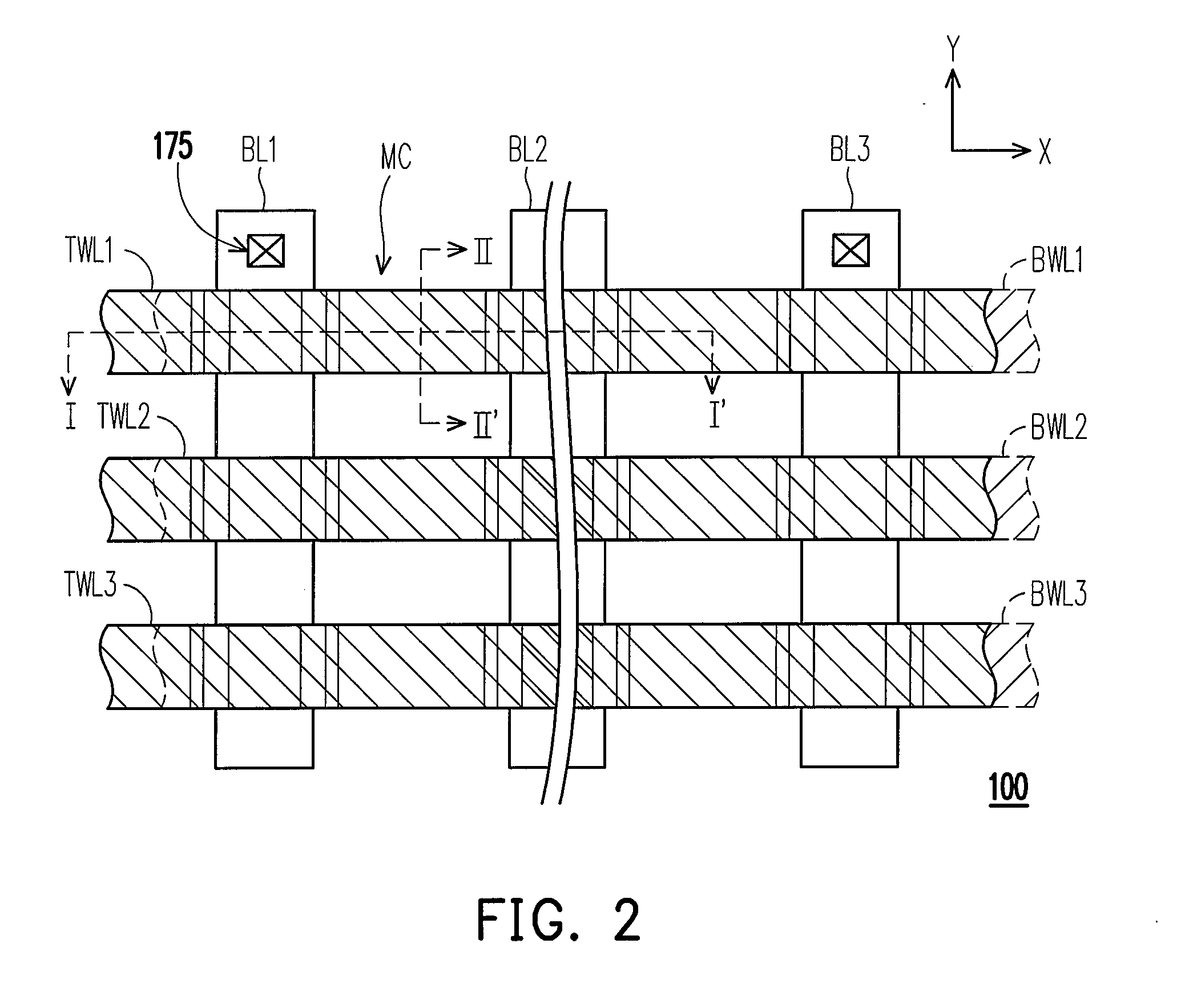Non-volatile memory and manufacturing method and operating method thereof and circuit system including the non-volatile memory
a manufacturing method and non-volatile memory technology, applied in the field of semiconductor devices, can solve the problems of increasing the manufacturing cost, occupying a lot of space, and prolonging the manufacturing process, so as to improve the reliability of the memory cell and the electrical performance of the memory, and facilitate programming, erased and read.
- Summary
- Abstract
- Description
- Claims
- Application Information
AI Technical Summary
Benefits of technology
Problems solved by technology
Method used
Image
Examples
Embodiment Construction
[0074]FIG. 1A is a cross-sectional view of a non-volatile memory according to an embodiment of the present invention. FIG. 1B is a cross-sectional view of a non-volatile memory according to another embodiment of the present invention. FIG. 2 is a top view of a non-volatile memory according to an embodiment of the present invention.
[0075]Referring to FIG. 1A and FIG. 1B, a single memory cell MC is used for describing the non-volatile memory in the present invention. The memory cell MC is disposed on a substrate 100 and is composed of a semiconductor layer 140, a first unit 120, a second unit 160, and a doped region 165.
[0076]Referring to FIG. 1A, the substrate 100 may be a silicon substrate. The first unit 120 includes a first gate 130, and a first charge trapping layer 122a and a second charge trapping layer 122b disposed at both sides of the first gate 130. The material of the first gate 130 may be doped polysilicon, and the material of the first charge trapping layer 122a and the ...
PUM
 Login to View More
Login to View More Abstract
Description
Claims
Application Information
 Login to View More
Login to View More - R&D
- Intellectual Property
- Life Sciences
- Materials
- Tech Scout
- Unparalleled Data Quality
- Higher Quality Content
- 60% Fewer Hallucinations
Browse by: Latest US Patents, China's latest patents, Technical Efficacy Thesaurus, Application Domain, Technology Topic, Popular Technical Reports.
© 2025 PatSnap. All rights reserved.Legal|Privacy policy|Modern Slavery Act Transparency Statement|Sitemap|About US| Contact US: help@patsnap.com



